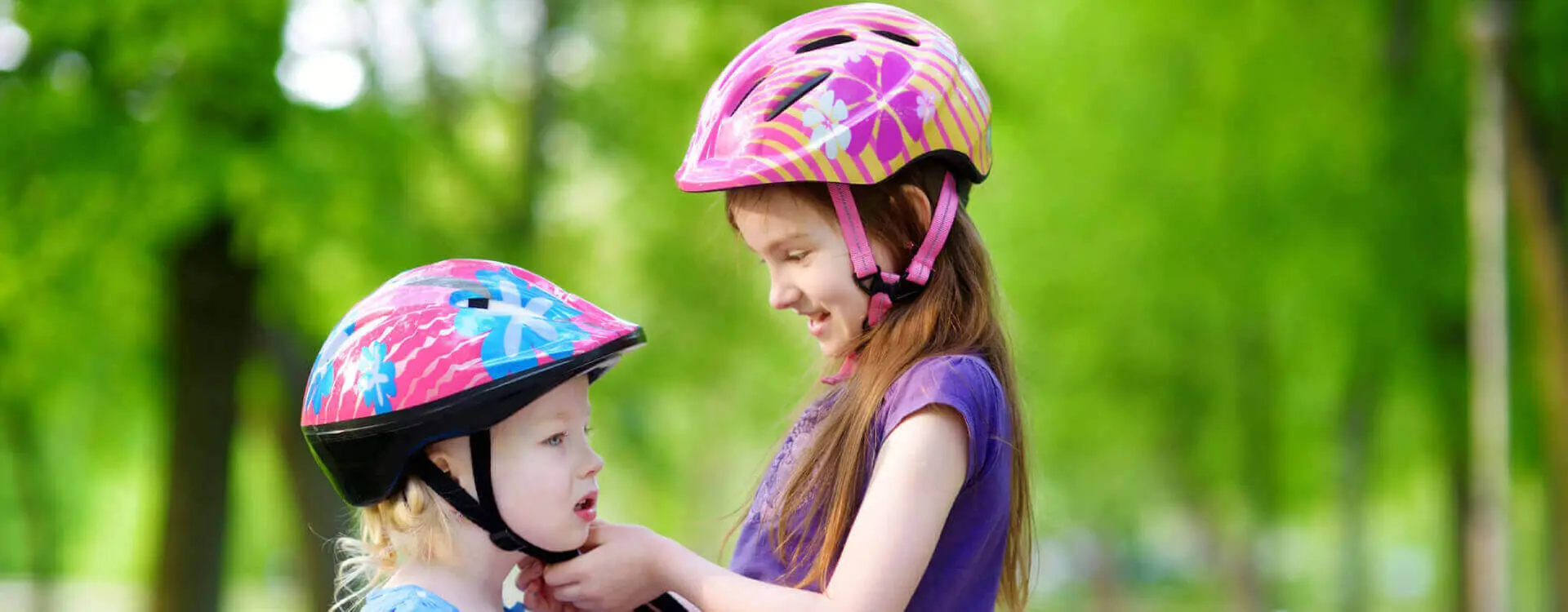Written By: Sandev Purewal, Senior Litigation Lawyer
Children grow up so fast. First, they’re crawling, then they’re taking their first steps, and before you know it, they’re asking to borrow your car. But in the years in between these milestones, you’ll likely find them out riding around on two wheels. Almost 90 percent of children between the ages of 5 and 14 have ridden a bike in the past 12 months.[1] Whether for exercise, transportation, or just fun, biking can be a big part of the childhood experience. Unfortunately, this activity is also a significant source of personal injuries for this age group. Children under 14 are more than five times as likely to be injured in a bicycle-related crash than other riders. Traumatic head injuries are the leading cause of death in bicycle crashes and the most important determinant of permanent disability. In this blog post, I’ll describe traumatic brain injuries (TBIs), outline the reasons why young riders are more likely to sustain these debilitating injuries as they get older, and note how a Gluckstein Lawyers’ community initiative called Set 4 Safety is helping to keep young cyclists safe.
What are traumatic brain injuries?
Traumatic brain injuries typically occur from a violent blow to the head or jolt to the body or head. Foreign objects that go through or lodge in brain tissue can also cause TBIs. Mild TBIs may result in temporary changes to brain cells, while moderate to severe TBIs can cause bruising, tears to brain tissue, bleeding and physical brain damage. More severe TBIs can lead to long-term or permanent disability or death. A TBI can result in one or more physical, sensory, or cognitive symptoms.[2] These symptoms, which vary depending on the severity of the injury, include: Physical: headache, fatigue, drowsiness, nausea, vomiting, problems with speech, dizziness, loss of balance, loss of consciousness, convulsions, seizure, weakness, numbness or other symptoms. Sensory: blurred vision, ringing in the ears, sensitivity to light, changes in taste and/or smell. Cognitive: confusion, disorientation, memory/concentration problems, mood changes, agitation, combativeness, depression, anxiety, and sleep problems/changes.
Biking, TBIs and children
Almost half of the children under the age of 14 hospitalized for bicycle-related injuries are diagnosed with traumatic brain injuries. More than 60 percent of bike-related deaths are due to head injuries. Children between the ages of 10 to 14 (especially male children) have the highest rate of death from bike-related head injuries. Experts suggest the decline in helmet use as children age may explain this statistic. Although most children recover from very mild TBI symptoms within six weeks, studies have found that about one in six children with mild TBIs still needed educational support services at school 12 months after their accident. Moreover, children with moderate to severe TBIs have been more likely to earn lower grades, repeat school years, and receive more special education services than other children. While there are few long-term studies of childhood TBI outcomes in adults, some research has shown students with moderate to severe TBIs are less likely to enroll in post-secondary education, hold a paying job outside of the home after school and live independently compared to adults who sustained other types of disability in childhood.[3]
What can be done?
Prompt medical attention, certain medications, surgery, rest and rehabilitation therapies can help treat acute TBI symptoms and/or limit the long-term effects of more serious TBIs. But prevention is key to avoiding a life-altering brain injury. Research suggests mandatory helmet laws to increase helmet use and decrease head injury risk.[4] Moreover, one study indicated that 95 percent of children wear helmets when riding with an adult wearing a helmet, while only 40 percent did if the adult did not have a helmet on. Helmet use and general bike safety education and promotion can have a positive impact on preventing traumatic brain injuries. As a personal injury law firm, Gluckstein Lawyers encounters many people dealing with the aftermath of a traumatic brain injury. We use our experience to help them choose to pursue a claim for compensation and damages, but our interest in full-circle client care means we strive to do so much more. As past President of the Brain Injury Association of Peel and Halton (BIAPH), I’ve seen first-hand what we can accomplish. We work together to protect people from brain injuries and enhance their lives if they have sustained one. In honour of Brain Injury Awareness Month this June, Gluckstein Lawyers hosts the Set 4 Safety Volleyball Tournament fundraiser to support the Peel Helmets on Kids (HOK) program. This program is a community-driven initiative committed to making the streets safer for hundreds of young cyclists by purchasing helmets for those who may not have access to one. Since 2008, Gluckstein Lawyers and our community partners have provided over 7500 children with helmets to help our children remain active and stay healthy and safe. Click here for more information about the program. If you or a loved one have sustained a traumatic brain injury and require legal assistance or if you want to join our efforts to help build traumatic brain injury support networks, please contact us for information on our services and community involvement
[2] Traumatic brain injury - Symptoms and causes - Mayo Clinic
Expertise.
Share
Subscribe to our Newsletter

